We never intended to visit the Democratic Republic of the Congo, mainly because of security issues in the country, however we had the good luck of meeting a very enthusiastic Spaniard on one of our hikes in Rwanda who convinced us to change our plans. Fernando had just returned from visiting Virunga National Park in the Congo and had only positive things to say about the country and it’s people. He showed us some pictures of a volcano he visited and I was immediately sold. It wasn’t just the photos either, Fernando was a very good salesman. He spoke with such energy about the people he met and places he visited in the Congo that it was hard to not get excited right alongside him. The Congo was also the 120th country that Fernando had visited, so we felt a bit more comfortable following in the footsteps of such an experienced traveller!
We spoke with Moses, the owner of our hostel in Rwanda (who is actually Congolese), and he helped us get the logistics for our visit to the Congo sorted out. We needed to get tourist visas and transportation settled. It normally takes at least a week to get a Congolese visa, but Moses told us not to worry. “I know the people at the border, they’ll let us through” he said with a big smile. So, we applied for a visa on the internet and then left for the border the next day. Sure enough, the charismatic Moses indeed knew all the border guards who quickly processed our visa applications on the spot and let us through. (we didn’t even have to pay any bribes for the expedited service!)
We had booked a hotel in Goma, the largest city in the eastern Congo with about 1.5 million people. So after crossing the border we hopped in a jeep and our driver took us to our place. It was a nice hotel located right along the water of Lake Kivu. Though it was a bit hazy because of the summer rains and humidity, we still had incredible views down the lake and also back towards the hills of Rwanda.
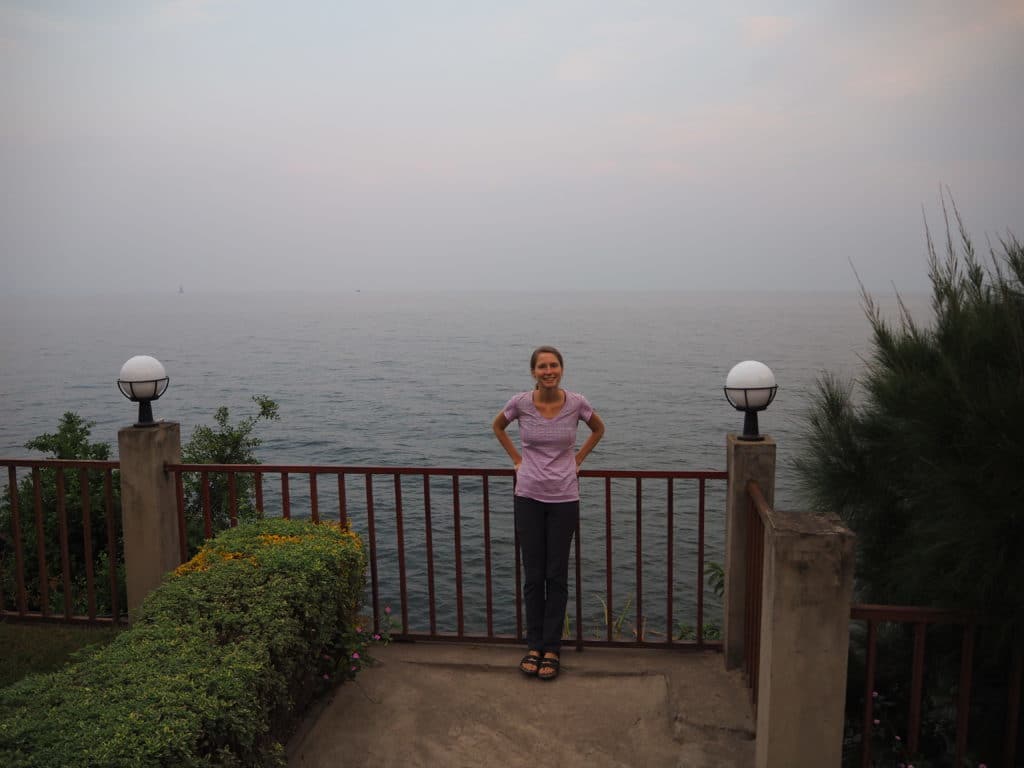
We had two main goals for our visit to the Congo. First, I would climb Mt. Nyiragongo (I would go on my own, Kathy was still worn out from our hiking in Rwanda), then both of us would head further into the Virunga Mountains to hopefully find some gorillas. However, our first excursion in the Congo was actually in the city of Goma itself. We needed to pick up our Virunga National Park passes as well as grab some money from an ATM. It was interesting driving around Goma. While it was similar to other large cities in Africa (lots of energy, full of color, streets busy with people) there were some distinct differences. First, we noticed a lot of wooden bicycles called “Chukudus” being used by the locals. They weren’t used for enjoyment like a typical bicycle, but rather as more of a workhorse of transportation. Almost every single one we saw was carrying enormous amounts of weight. For example, we saw one man on a Chukudu which was carrying roughly 50 10ft long 2×6 planks of wood. Most of the time they are used to carry produce to the markets in town. What makes them even more amazing is that every single one of them is handmade. It is incredible how resourceful people can be when money is hard to come by! The second difference we noticed in Goma compared to other African cities was the heavy presence of UN personnel. The eastern Congo has had a lot of problems with armed rebel groups over the last 20 years, so the UN has a large contingent of troops in the region to help the government try to maintain control. Goma was the first and only place we’ve seen UN soldiers on active duty. The blue helmets of UN soldiers are rather famous around the world, but to see them in person was a bit unnerving to be honest. However, we had done our research before heading to the Congo, and Goma is actually quite safe thanks to the work the UN has done there over the last 10 years.
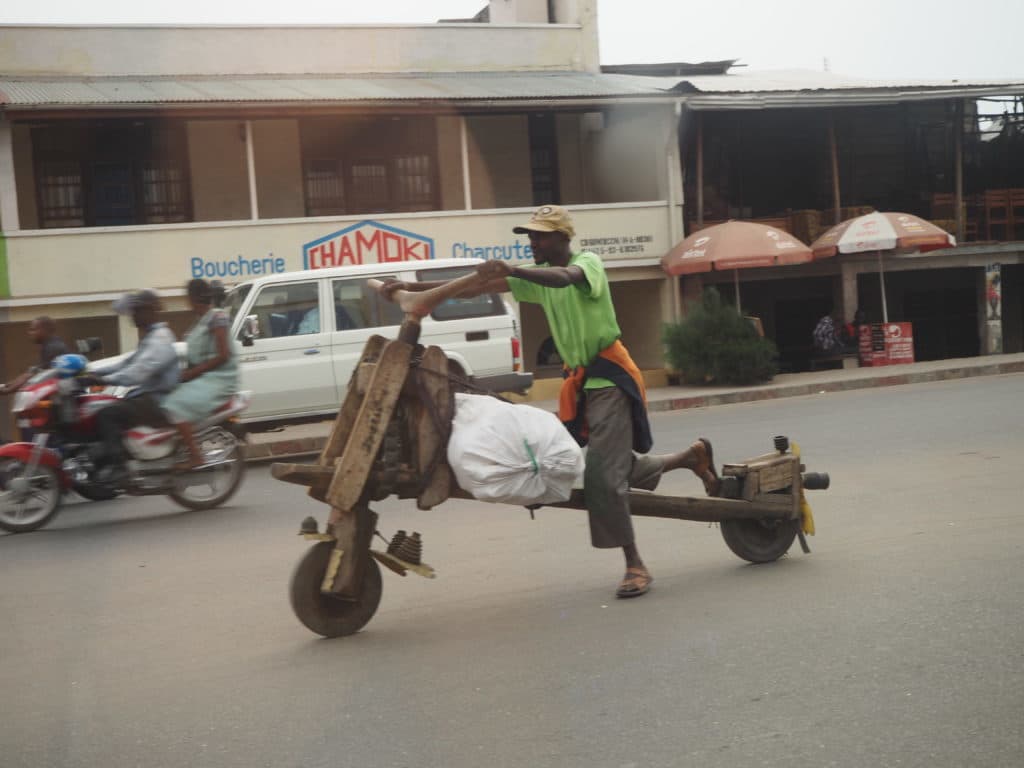
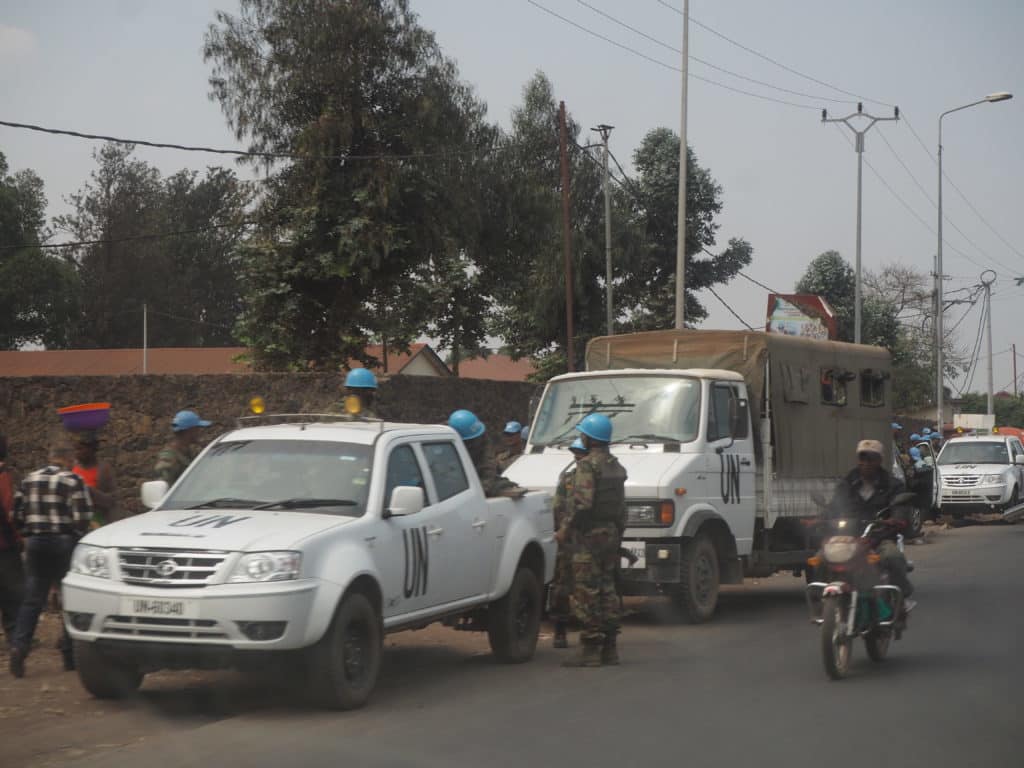
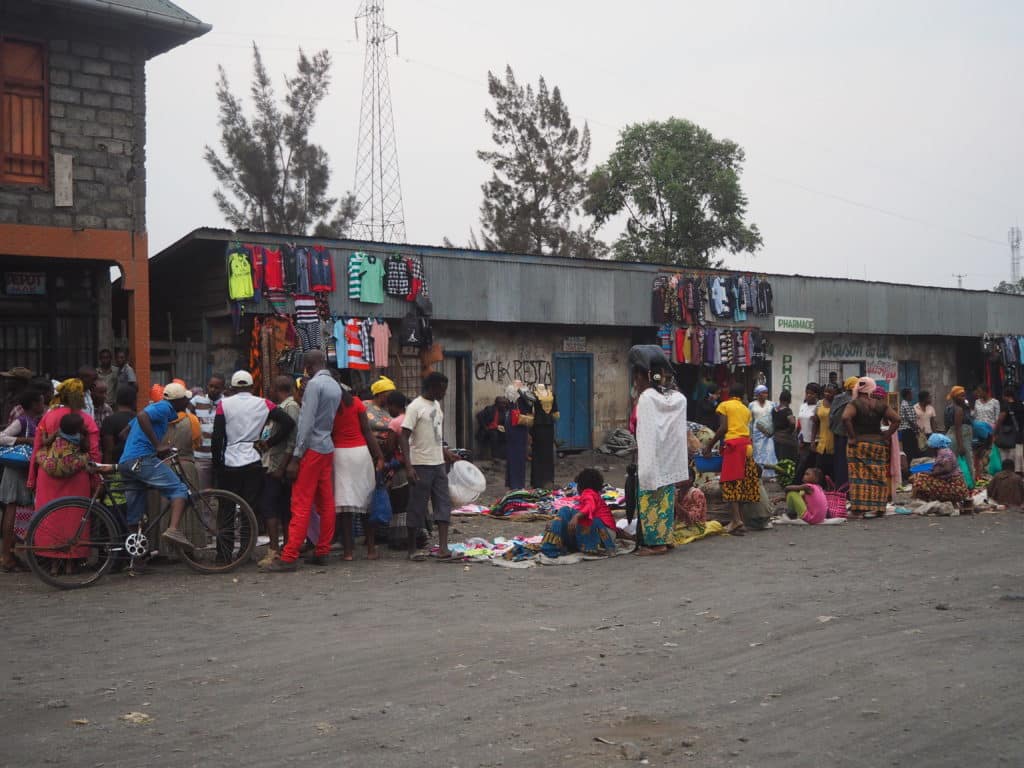
After we picked up our park passes we headed to the outskirts of Goma to visit a village of pygmies. We were initially skeptical about visiting this village because we normally don’t like to do things that we feel may objectify people. We especially disdain excursions that take you someplace where locals perform a cultural activity for tourists. Some excursions like that make you feel as if you’re visiting a human zoo and watching “different” people do “weird” things. However, our visit to the pygmy village was absolutely wonderful. As soon as we got out of our car we were met by roughly 10 young children who were smiling and giggling with one another as they looked at us. We walked up to the kids, said “bonjour”, and shook their hands (French is the official language of the Congo). The smiling and giggling was turned up about 10 notches after we engaged with the kids. It was absolutely impossible to not become infected with the energy and happiness that these kids had! Then, as we continued further into the village, something odd happened. With every step we took, our following of children grew. This in itself wasn’t completely abnormal, as kids everywhere tend to be curious of outsiders. However, what was odd (and quite hilarious) was that all of the kids were dancing alongside us as we walked. They were jumping up and down, stomping their feet, and spinning around in circles. As they danced they laughed and giggled and smiled. These kids were having an absolute blast showing off for us. We hadn’t seen anything like it before!

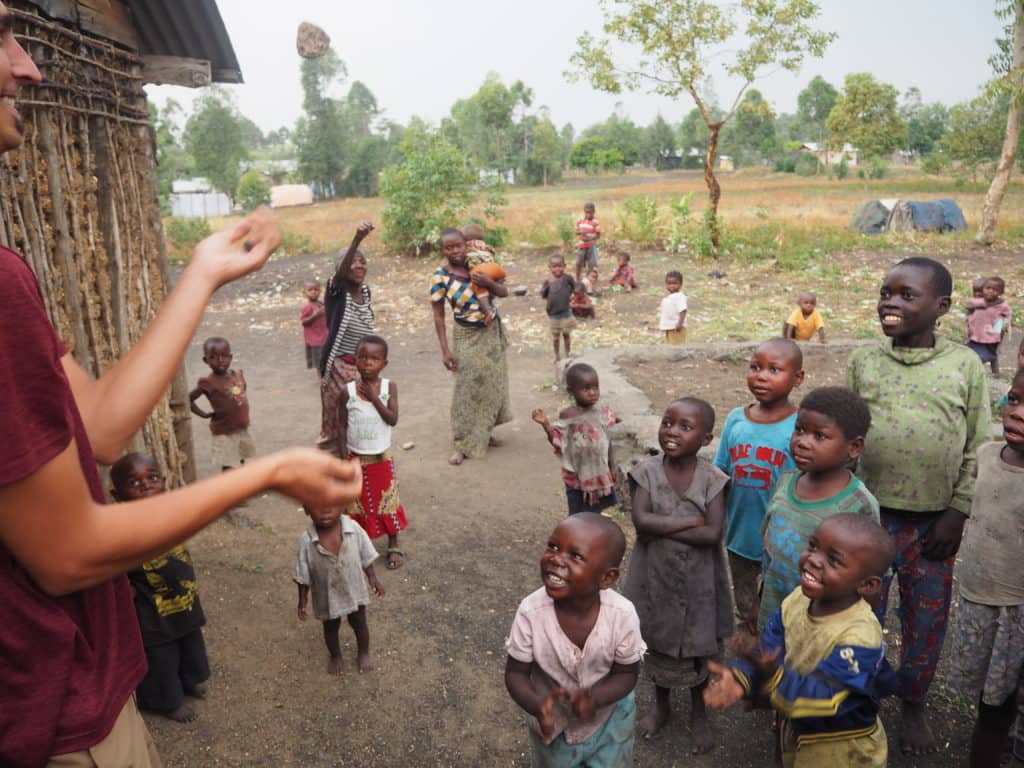

We quickly realized why the kids had been dancing the whole time as they followed us. As soon as we reached the center of the village the men gathered up some simple instruments (jugs, sticks etc..) and began to sing and lay down some beats. Then the women began to sing along and dance in a circle. Once the adults started dancing the energy level of the kids hit a fever pitch. They were bouncing around like little energizer bunnies and showing off and posing in front of me with the camera. The women were also clearly enjoying the impromptu party. They were giving each other elbows and hip bumps as they danced and sang, laughing and smiling the entire time. It was wonderful seeing how happy people can be when they live with only the simplest of things. It was a lesson in how much more important friends and family are to one’s life than any material thing that can be purchased.

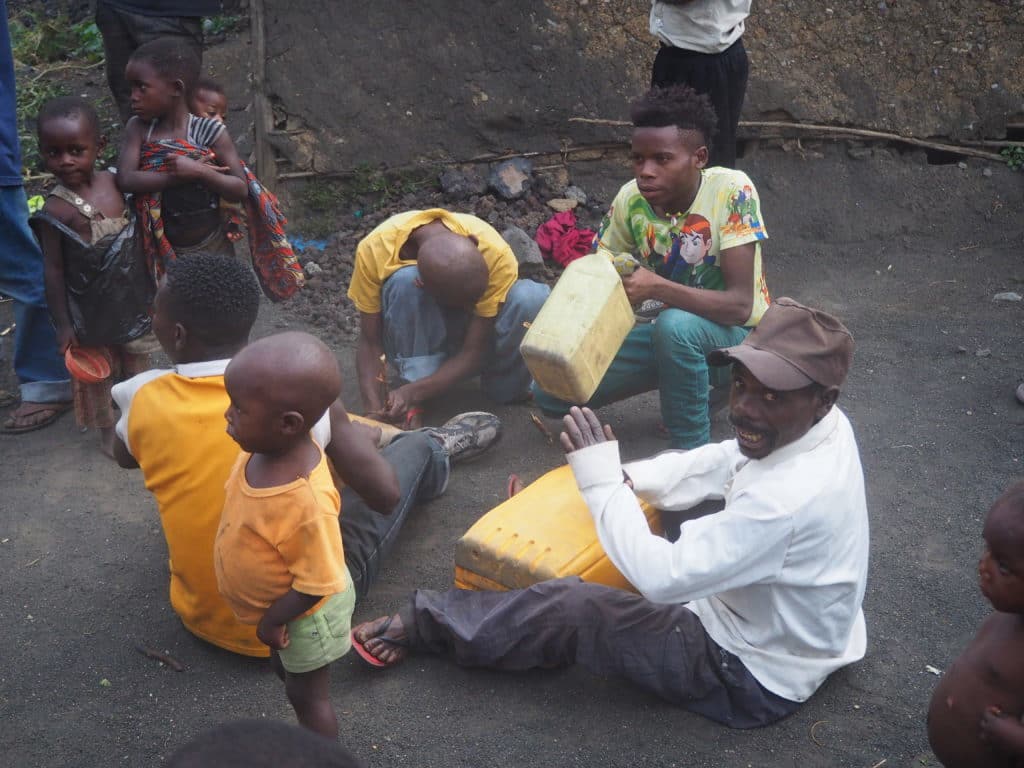
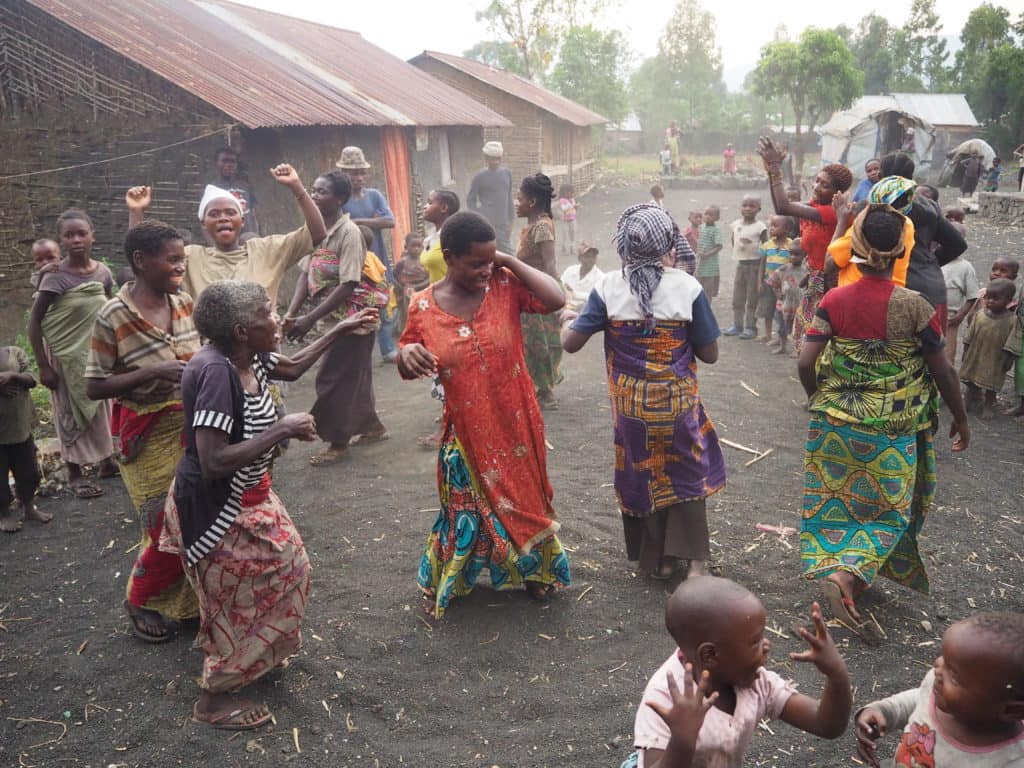
After our visit to the village we headed back to our hotel. I wanted to get some rest in order to be prepared for the climb up Mt. Nyiragongo the next day. I was picked up around 6 a.m. and driven to the foot of Mt. Nyiragongo in Virunga National Park. Nyiragongo is an active volcano, and it is easy to tell because there is a constant billowing of smoke and gases from the top of the mountain which is visible for miles around. Standing there at the base of the mountain and looking up was rather intimidating. It looked so far away, and so tall, yet I was somehow supposed to climb to the top of it over the next 6 hours??
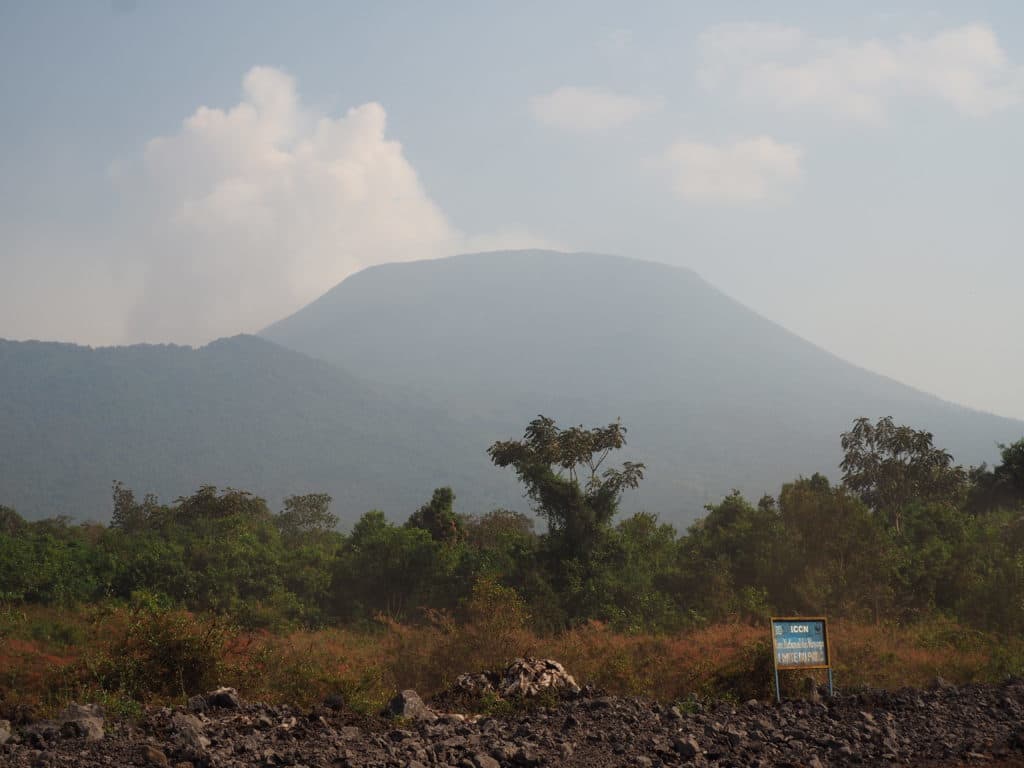
While the hike was indeed difficult, it was one of the most unique hikes I’ve ever done. The first several hours of the hike took us through hot and humid jungle where armies of ants scurried across the trail and countless species of birds called to each other through the trees. After a few hours the trail changed from dirt into loose rock. It wasn’t your regular rock though, we were in fact hiking up a trail that was created when the volcano erupted in 2002 and sent a river of lava streaming down the mountain where it burned a mile-wide path through the city of Goma and burst into Lake Kivu. So, we were literally hiking on top of lava!



After 6 hours of strenuous hiking we reached the top of Nyiragongo at 3,470 meters (11,385ft). It had begun to rain the last 30 minutes of the hike, so when we arrived at the top we ducked inside our huts on the crater rim where we would spend the night. The rangers told us that the weather would clear by 5 p.m. and then we’d be able to see the volcano crater clearly. I was a bit pessimistic though because we were completely surrounded by fog. However, by around 5:30 p.m. the fog began to lift and we were given our first view of one of the rarest sights in the world: an active lava lake. It was beautiful during the day, but once night set in, the lava lake became utterly mesmerizing. It was similar to being hypnotized by the flames of a campfire dancing about wooden logs. The lava was constantly in motion, swirling, bubbling, and emitting smoke and gas. I stood and watched it for hours and hours. We could even feel the heat of the lava even though we were probably 1,000 feet away from it. The smell of sulfur and phosphorous was also quite strong if the wind blew in our direction. Seeing the lake of lava, smelling the gases, and feeling the heat of the volcano made it seem like I was staring directly into the center of the earth. It was one of the most amazing experiences I’ve had.

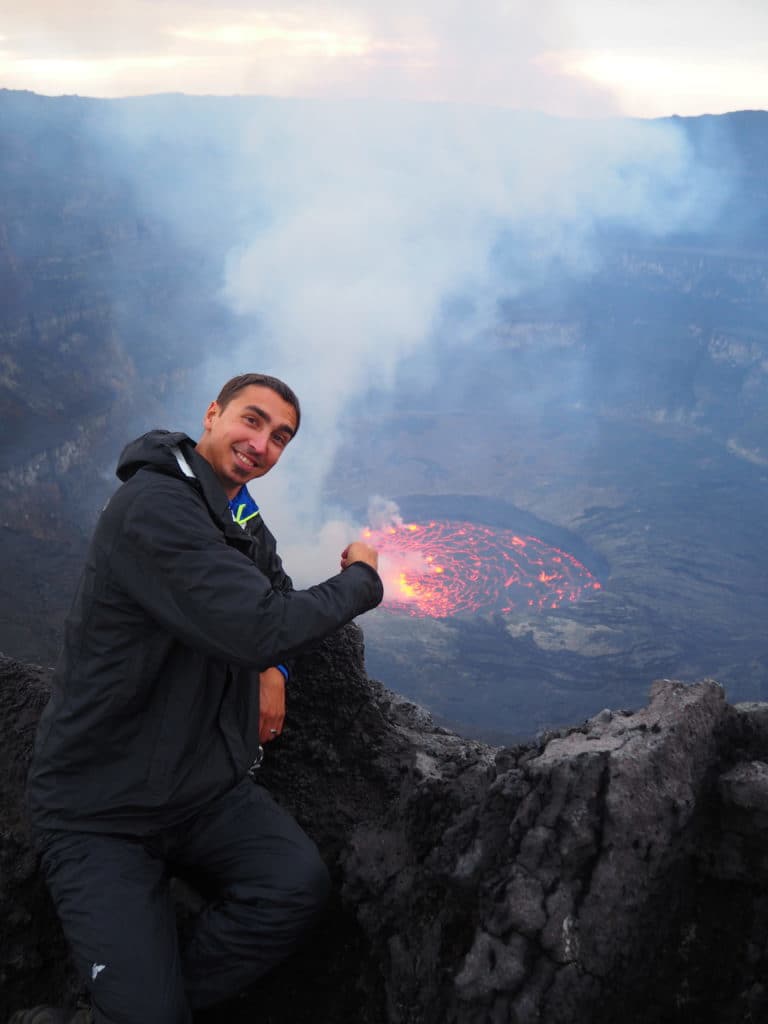
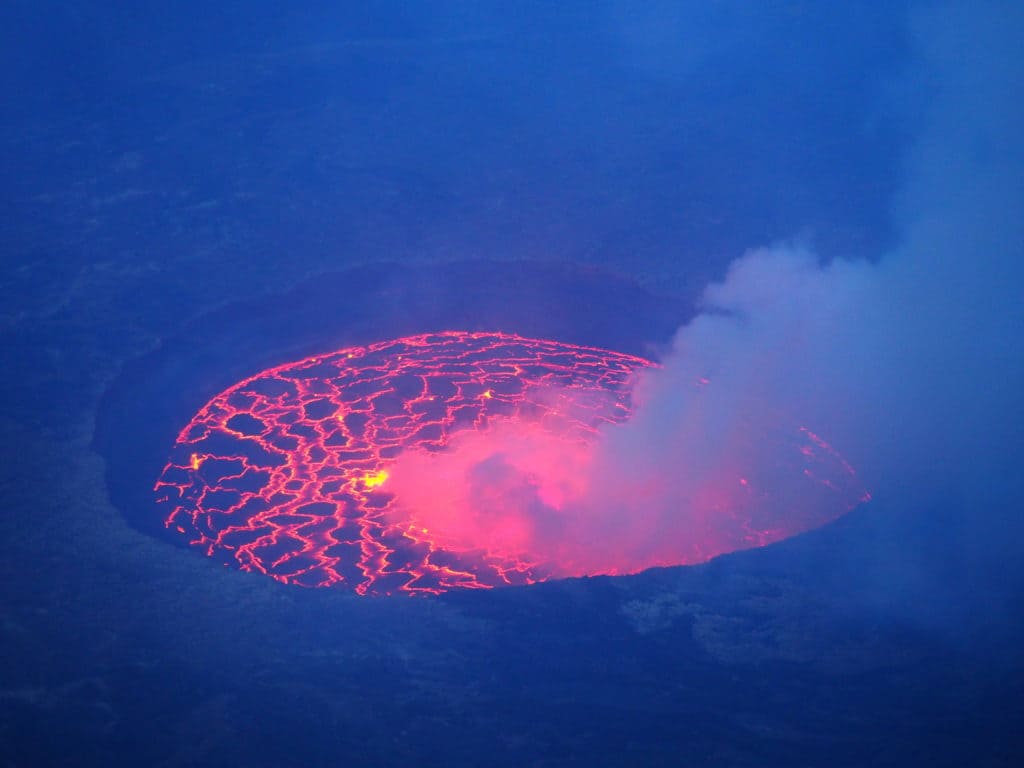
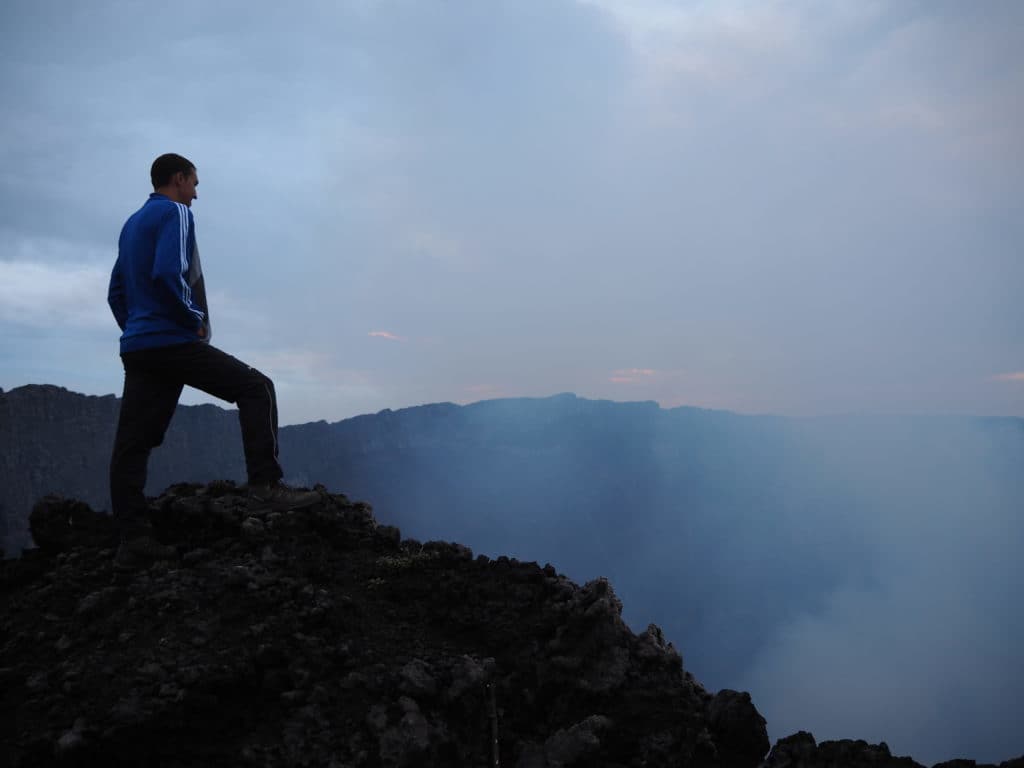
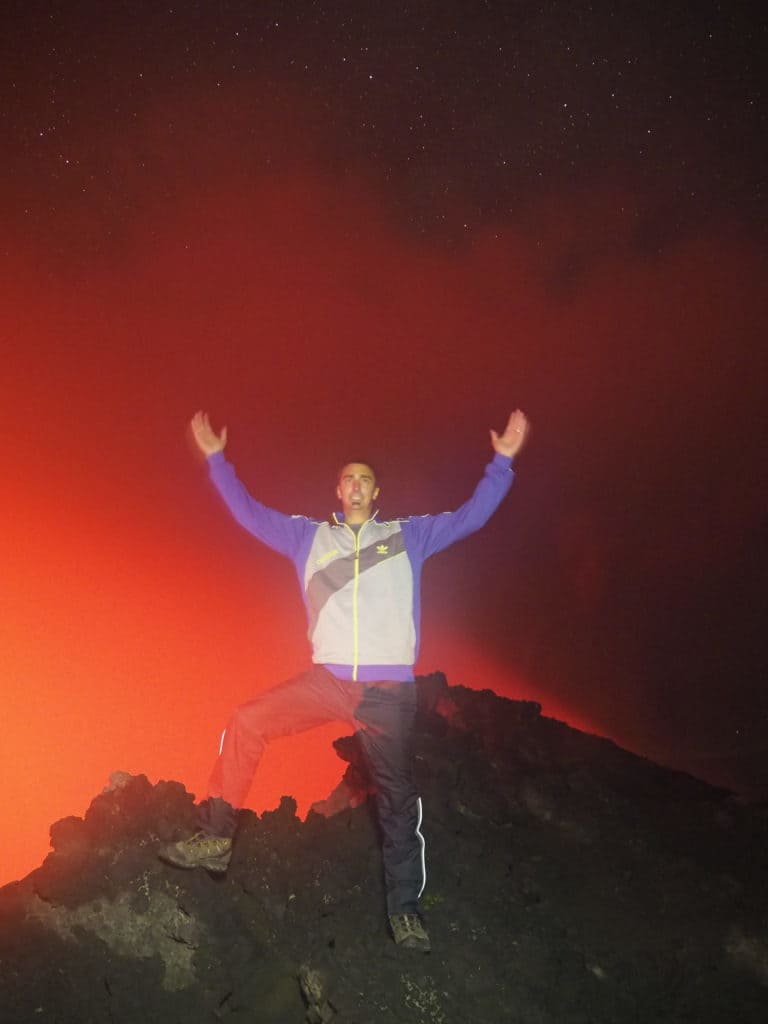
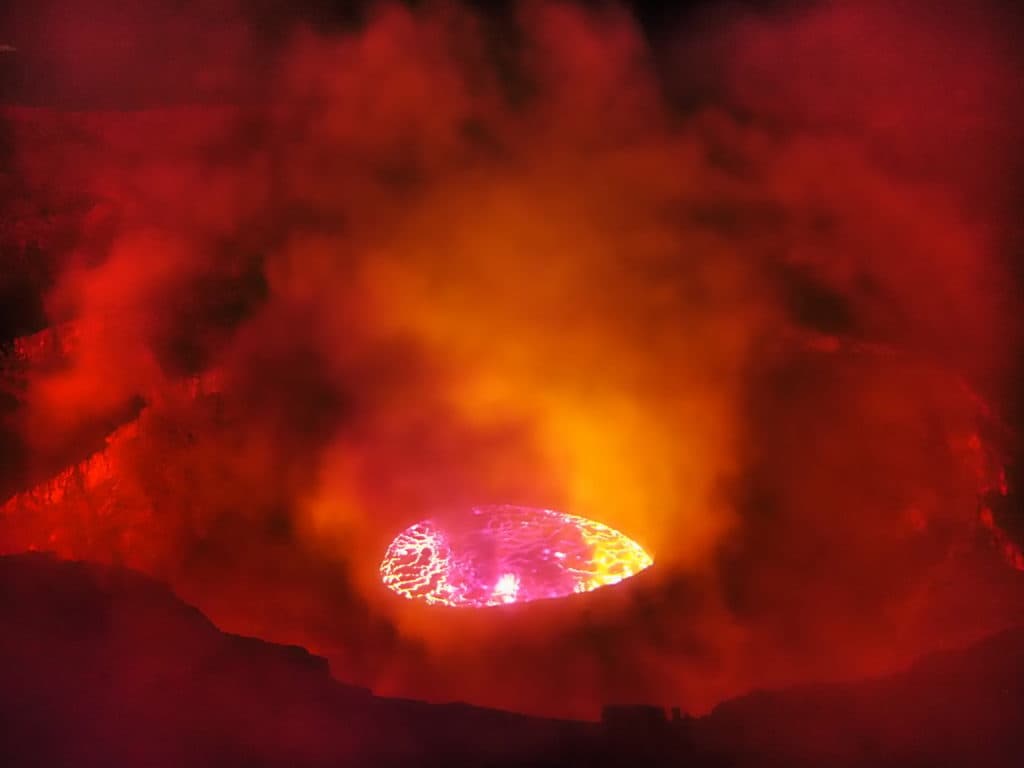
We started down the volcano the next morning around 6 a.m. (I literally spent the night in a hut roughly 20 feet from the edge of the crater on the top of the volcano!) I arrived back at our hotel in Goma around 12 and Kathy and I spent the next day relaxing on the terrace by the lake. I enjoyed a few beers while Kathy read a book.
We were picked up early the next day for our next Congolese adventure: Gorilla trekking! We headed towards the outpost of Bukima, high up in the Virunga mountains. We were met there by rangers who gave us information on how to handle ourselves around the gorillas (be quiet, don’t make eye contact, wear a face mask, listen to the rangers etc..). After the briefing we headed into the jungle to find the “Humba family”. The Humba family consisted of a dominant male Silverback named Humba, his son (also a silverback), four adult females, 3 juveniles, plus 1 baby. All told, the Humba group consisted of 10 individuals.
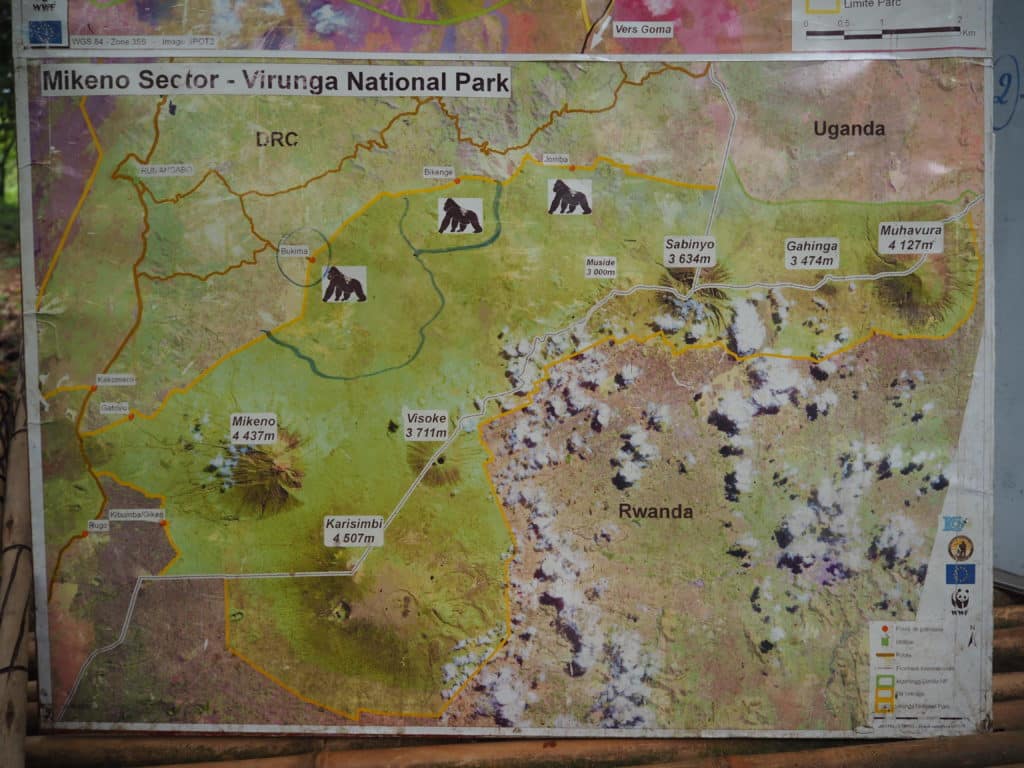
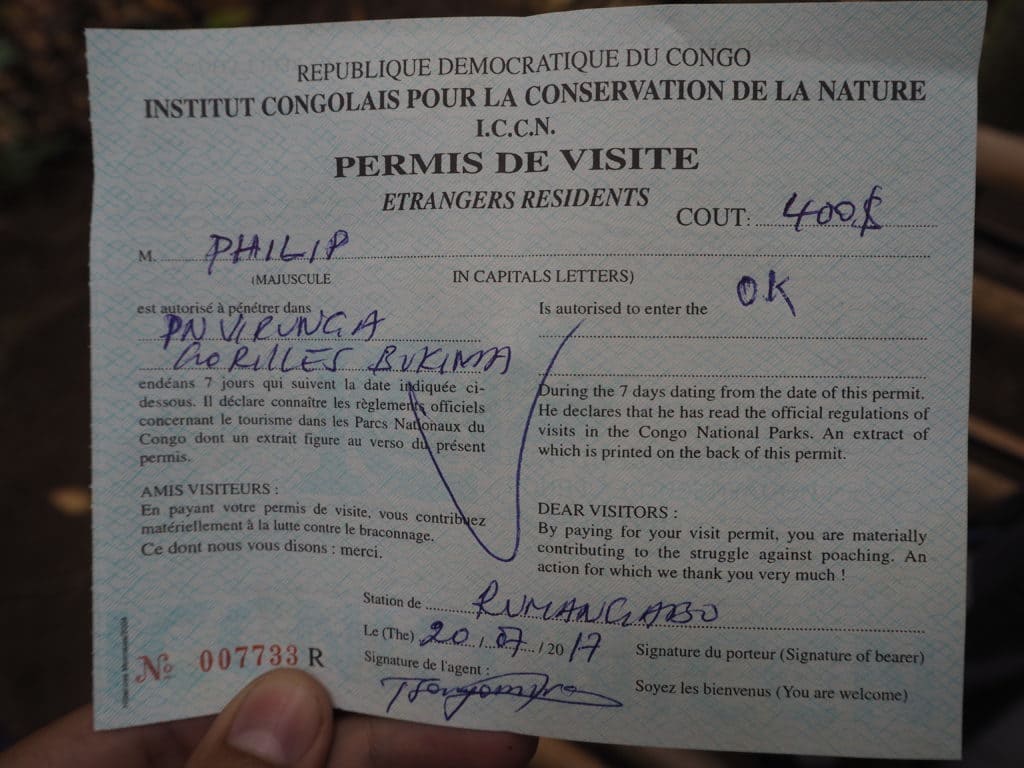

It was a relatively easy hike into the jungle to reach the gorillas. Even though the vegetation was thick, the ground was relatively flat and we had a few trackers ahead of us with machetes to make the path easier. After about 45 minutes of trekking through the jungle we were told to put our face masks on (gorillas can catch infections from humans, even the common cold can be deadly to them). So we put on our face masks and walked another 20 feet or so. Then, underneath a thicket of vines were the gorillas. They were resting peacefully and were not all disturbed by our presence. This group was one of the few “habituated” gorillas, meaning that they often had human visitors coming to see them so were used to seeing humans up close.
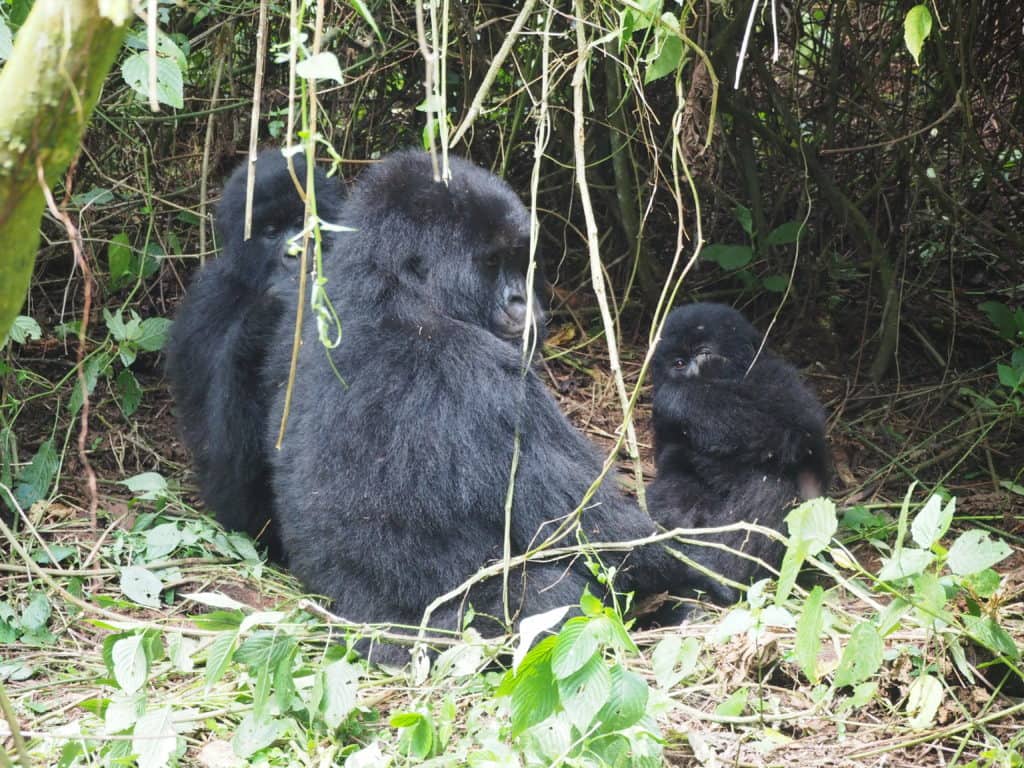

It was extraordinary how close we were able to get to the gorillas. The rangers kept telling us that we could get a bit closer, and we ended up no further than about 15 feet away from these impressively large apes. The rangers would occasionally grunt (kind of a “huh huh” sound) to let the gorillas know we didn’t pose any threat. The gorillas just hung out and relaxed, not seeming to have a care in the world. What was most amazing though was the fact that they seemed to be fully cognizant that we were there and that we were humans. They would occasionally look at us and when they did, it was easy to tell that they are incredibly intelligent creatures and clearly one of our closest relations. You could tell that there was more going on behind their eyes than a typical animal. When a deer looks at you, it seems to have a completely blank stare. Not so with gorillas. It was as if they were thinking: “Really? You hairless idiots came here again? What is so interesting about watching us rest? Huh? ANSWER ME!!”
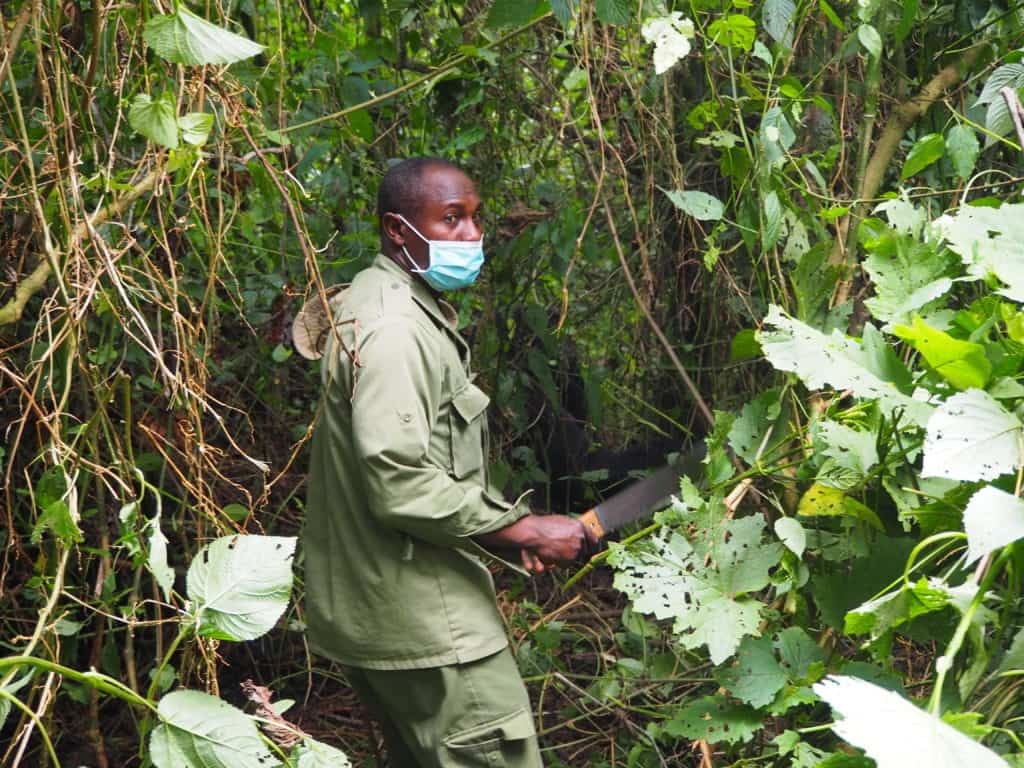
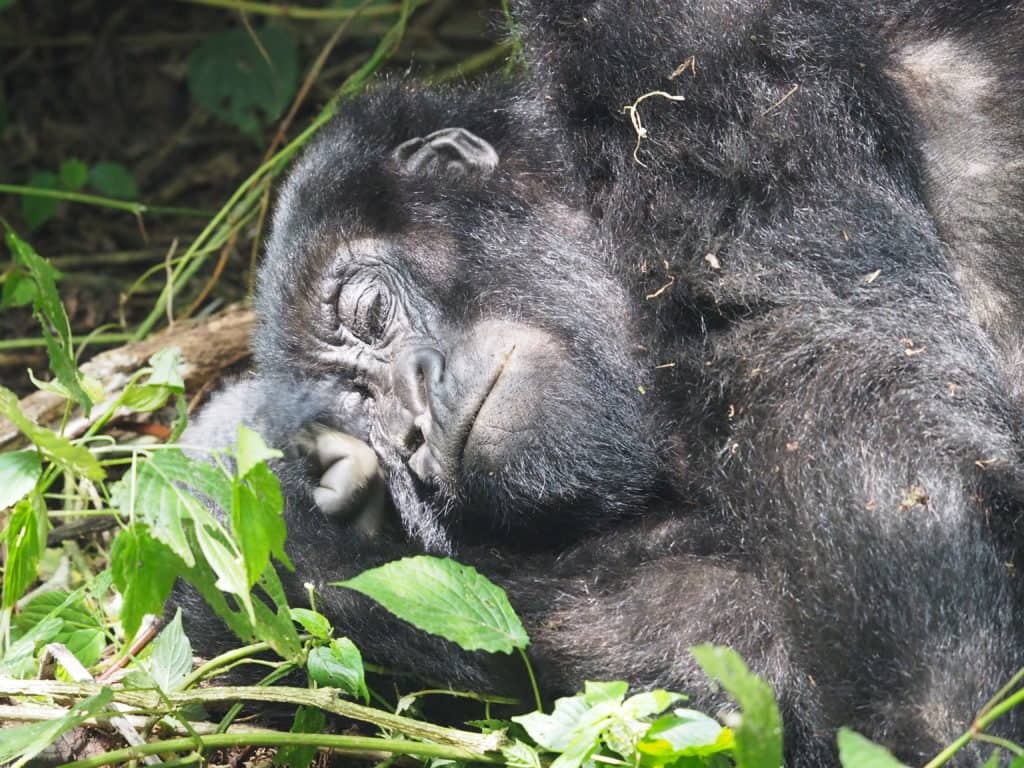
We watched this group of gorillas for about an hour. Most of the time they lounged about resting, but while the adults rested, the baby was having a ball rolling around and being mischievous. He would climb onto its mother, fall off, then climb on a different gorilla to play. The whole time wobbling about, a bit unsure about how his limbs functioned. At one point the baby began to bother one of the adolescent gorillas, so the adolescent just stuck its feet in the baby’s face. That didn’t seem to bother the baby though, because it seemed to enjoy biting the feet.
After a while the group began to get up and move around. They began to feed on some plants on the ground and started to pull vines out of trees to eat their leaves. It was at this point that we got incredibly close to some of the gorillas. The younger silverback gorilla was resting about 40 feet away initially, but decided to come over and join the group. In doing so, he walked within 3 feet of us. I could have literally reached out and smacked him in the face. I didn’t do that though, because if I had, he probably would have ripped my arm off and beat me to death with it. He was an impressive looking animal. Each one of his arms was roughly the size of my two thighs put together. So if anyone ever says that vegetarians are weak, just tell them to challenge a gorilla to an arm wrestling competition and then they’ll see how powerful a vegetarian can actually be.


Our gorilla trek was a fitting end to our time in the Congo. It showed us how beautiful the Congo is, with mist covered jungles covering the sides of mountains. Yet, the area is very fragile. Only about 800 mountain gorillas still remain in the wild. Mainly due to habitat destruction as humans encroach on their territory, often in the form of armed rebel groups looking to profit from the Congo’s vast natural resources. But as this next video shows, these animals are worth protecting! None of this would be possible without all of the hard work of the rangers of Virunga National Park.
The Congo was not initially on our list of countries to visit, but we are thrilled that we decided to change our plans and head into its jungles. Our experiences there stand out as some of the most exciting we’ve yet had.

